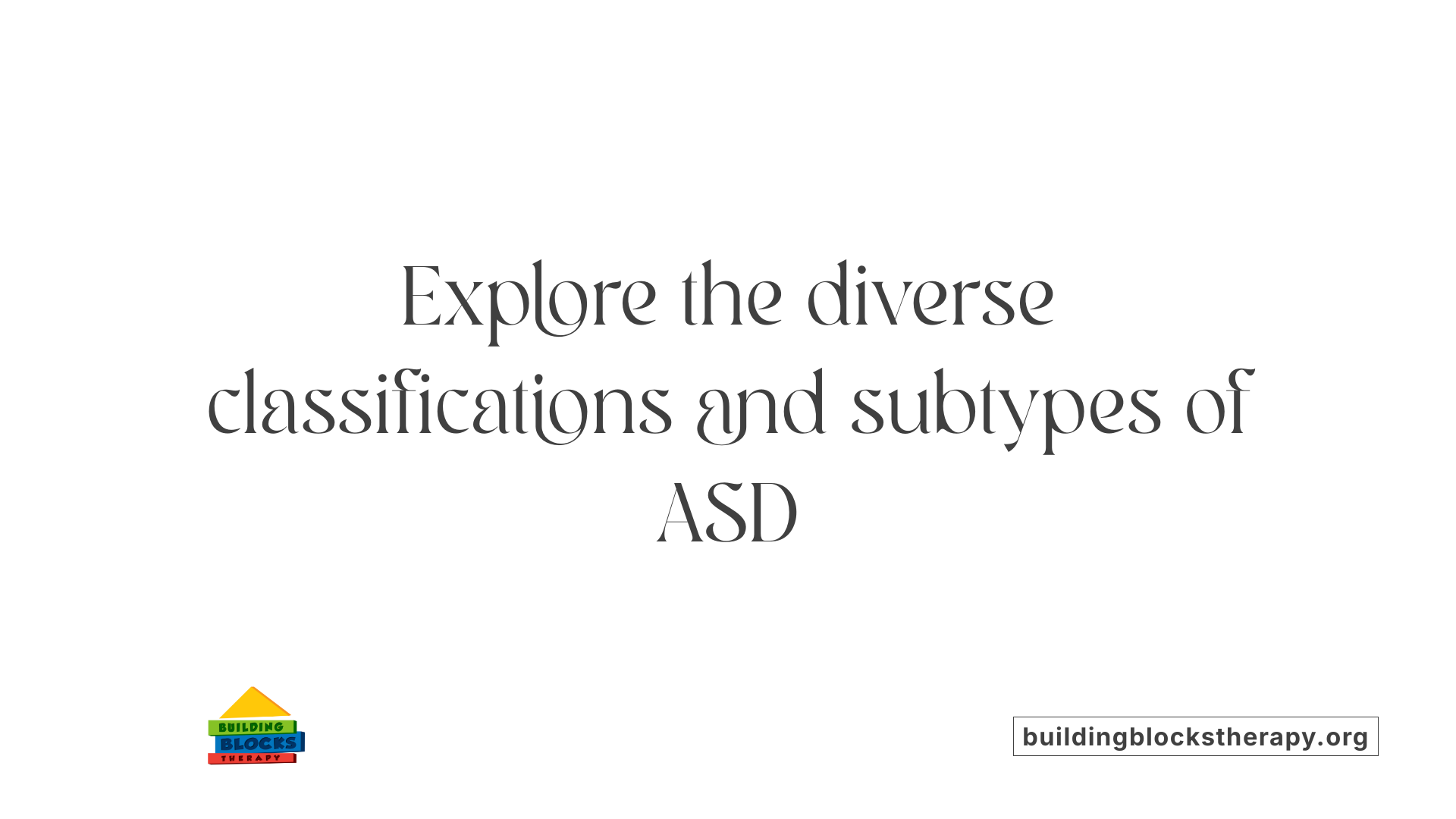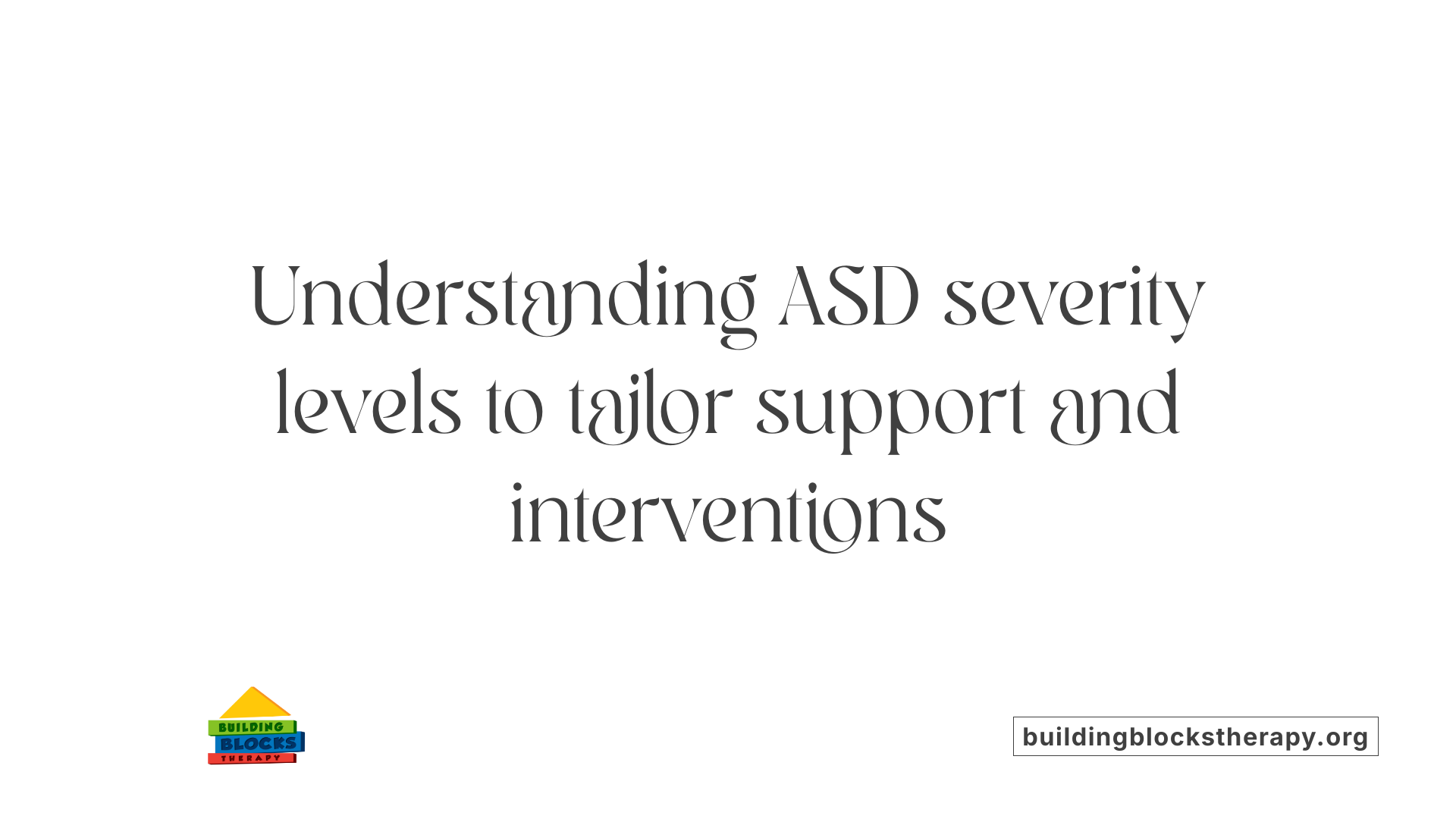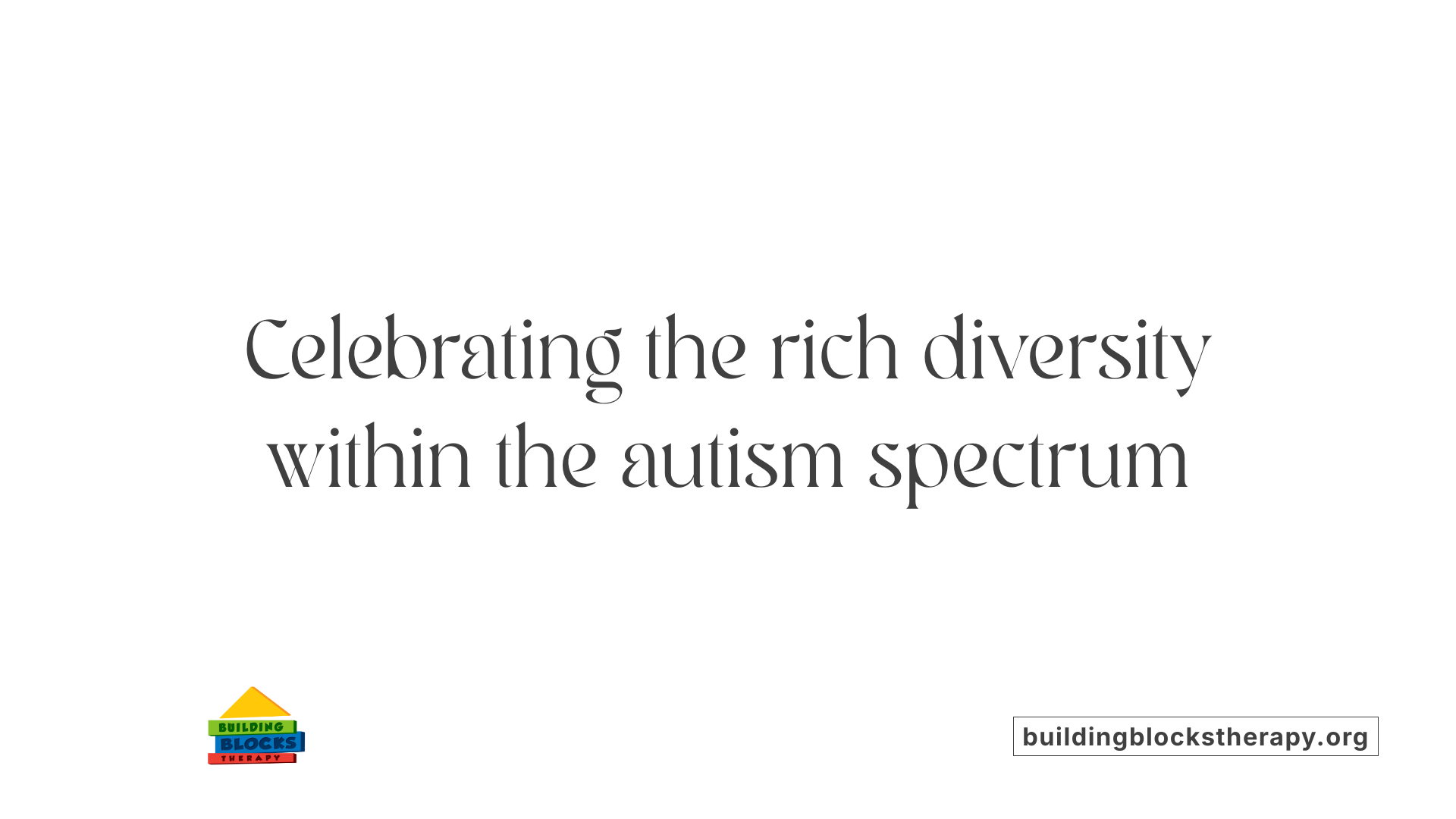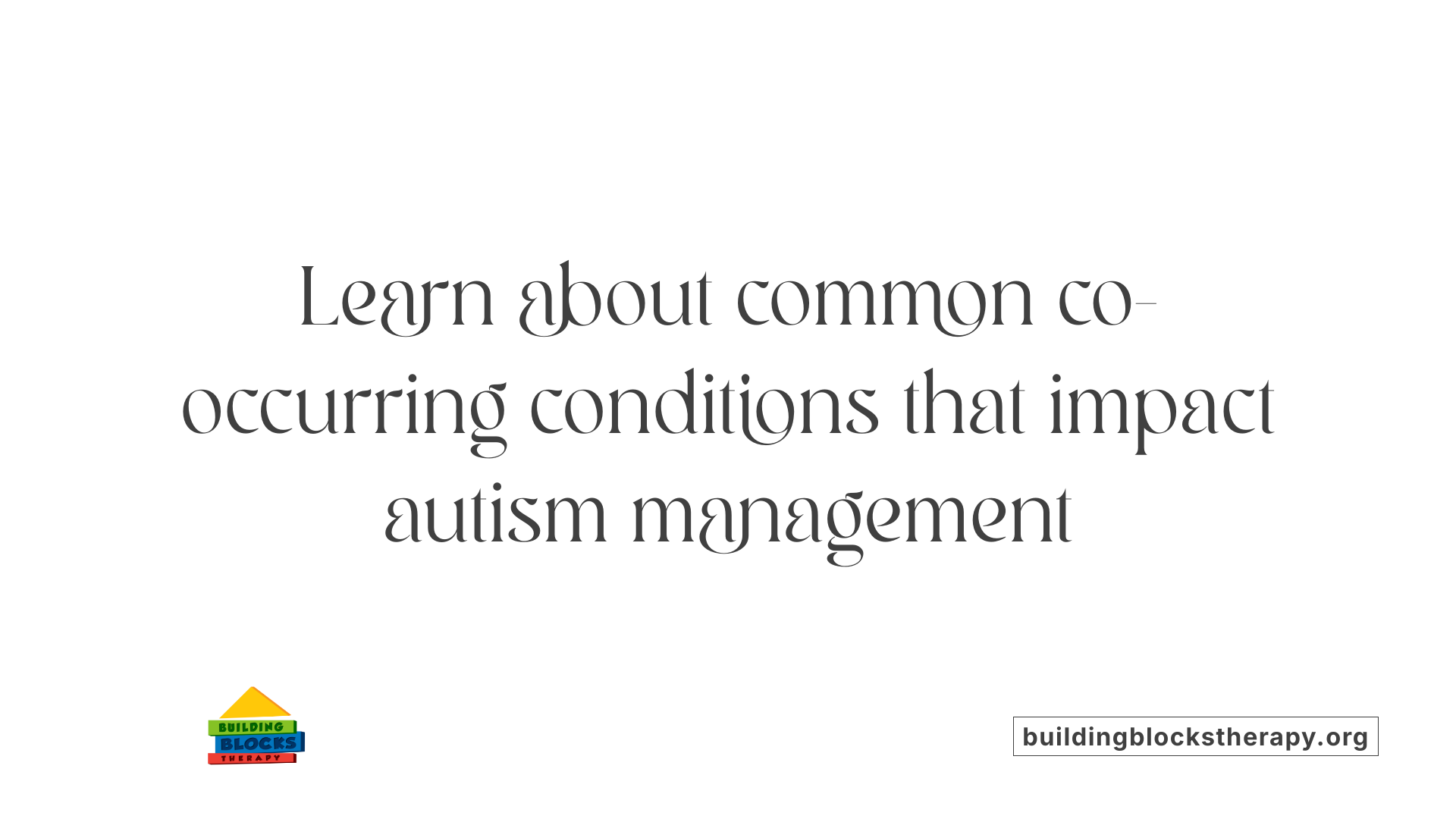Types Of Autism
Understanding the Spectrum: A Deep Dive into Autism Variations

Exploring the Diversity of Autism Spectrum Disorder (ASD)
Autism Spectrum Disorder (ASD) is a complex neurodevelopmental condition characterized by a wide range of social, behavioral, and communicative challenges. Historically, various conditions such as autistic disorder, Asperger’s syndrome, PDD-NOS, childhood disintegrative disorder, and Rett syndrome were classified separately. Today, they are encompassed under the umbrella of ASD, reflecting our deeper understanding of the spectrum’s diversity. This article provides an in-depth exploration of the different classifications, severity levels, characteristics, and the biological basis of autism, emphasizing the significance of a nuanced, personalized approach in diagnosis and support.
Classifications and Types of Autism Spectrum Disorder (ASD)

What are the different classifications and types of autism spectrum disorder (ASD)?
Autism spectrum disorder (ASD) is a broad term that includes various neurodevelopmental conditions marked by difficulties in social communication, interaction, and repetitive behaviors. Over the years, medical understanding and diagnostic standards have evolved, leading to changes in how these conditions are classified.
Historically, clinicians recognized several separate diagnoses within what is now called ASD. These included:
Autistic Disorder (or Classic Autism): Characterized by severe impairments in communication and social skills, along with restricted and repetitive behaviors. Symptoms typically appear by age 3, and many individuals have intellectual disabilities.
Asperger’s Syndrome: Considered a milder form of autism, individuals usually do not experience language delays and often have average or above-average intelligence. Challenges primarily involve social interactions and narrow interests.
Pervasive Developmental Disorder-Not Otherwise Specified (PDD-NOS): Also known as atypical autism, this diagnosis was used for individuals who showed some signs of autism but did not meet all the criteria for autistic disorder or Asperger’s syndrome. Symptoms could be uneven or milder.
Childhood Disintegrative Disorder: A rare and severe condition where children develop typically but then lose skills in language, social interactions, and motor functions, often accompanied by seizures.
Rett Syndrome: Although behaviors similar to autism appear, Rett syndrome is now considered a distinct genetic disorder affecting mainly girls. It causes severe impairments, including slowed growth, loss of purposeful hand skills, and seizures.
In 2013, the American Psychiatric Association updated the diagnostic manual DSM-5, leading to a unification of these conditions under a single spectrum called ASD. Instead of separate diagnoses, clinicians now specify the level of support needed and note particular traits.
Under DSM-5, autism is categorized based on severity:
| ASD Level | Support Needed | Characteristics |
|---|---|---|
| Level 1 | Requiring support | Difficulties with organization and planning, noticeable social challenges |
| Level 2 | Requiring substantial support | Marked deficits in social communication, repetitive behaviors interfering with functioning |
| Level 3 | Requiring very substantial support | Severe deficits, minimal responses, significant restrictions |
Furthermore, recent research has identified four subtypes based on traits, genetic markers, and development patterns:
| Subtype | Features | Developmental and Genetic Insights |
|---|---|---|
| Social and Behavioral Challenges | Difficulties in social and communication skills with fewer developmental delays | Specific gene variations impacting development |
| Mixed ASD with Developmental Delay | Combinations of delays across multiple areas | Genetic and environmental factors affecting broader brain development |
| Moderate Challenges | Fewer difficulties, no significant delay | Less impacted, often IQ within normal range |
| Broadly Affected | Severe impairments and delays | Active gene regions, often linked to genetic syndromes |
These classifications underscore ASD’s diversity, emphasizing that each person’s experience and support needs are unique. Genetic factors, including conditions like Fragile X syndrome and Tuberous Sclerosis, play roles in some cases.
Why is understanding these classifications important?
Knowing the historical context helps clarify how diagnostic practices have shifted toward a more integrated view. Recognizing the spectrum nature of ASD guides tailored interventions and support strategies, focusing on individual strengths and challenges.
Today, the emphasis is on early detection and support, regardless of specific labels. The comprehensive understanding of various subtypes and severity levels enables practitioners to develop personalized treatment plans, aiming for improved quality of life for individuals on the spectrum.
Severity Levels and Their Significance in Diagnosis

What are the main severity levels of autism according to the DSM-5?
The DSM-5 categorizes autism spectrum disorder (ASD) into three distinct levels based on the amount of support an individual needs to function effectively in daily life. These levels are designed to provide a clear understanding of the severity of social communication impairments and behavioral restrictions.
Level 1: Requiring Support This level includes individuals with noticeable challenges in social interactions and some inflexibility in behaviors, which can cause interference with their daily activities but are generally manageable with support. People at this stage often can initiate social interactions but may struggle with organization and planning, leading to difficulties in academic, occupational, or social settings.
Level 2: Requiring Substantial Support Individuals classified under Level 2 face significant challenges that interfere with everyday functioning. They often display limited social initiation, difficulty managing repetitive behaviors, and substantial communication deficits. These challenges typically require more structured support and intervention to help navigate social situations and daily routines.
Level 3: Requiring Very Substantial Support At this most severe end of the spectrum, individuals exhibit severe deficits in social communication, including minimal responses to social overtures and an almost complete lack of communication skills. They also have intense restricted and repetitive behaviors that greatly hinder independence. These individuals often have limited or no verbal communication, making substantial care and support necessary for daily living.
Implications of severity levels for daily functioning and support needs
Understanding these severity levels is crucial not just for diagnosis but also for planning the appropriate support and interventions. For example, individuals at Level 1 might benefit from targeted social skills training and structured routines to improve social interactions and organizational skills.
Those at Level 2 may require intensive behavioral therapy, speech therapy, and educational support tailored to their individual needs. They might also need help with adaptive skills such as daily self-care and communication.
Level 3 individuals often require comprehensive, lifelong care, including assistance with mobility, communication, and self-care tasks. Support might involve specialized therapies, medical interventions, and extensive caregiving services.
The classification helps caregivers, educators, and health professionals to understand the extent of support necessary and to develop personalized care plans. It also aids in setting realistic goals and expectations, ensuring that each individual with ASD receives appropriate, targeted assistance to maximize their potential and improve their quality of life.
| DSM-5 Severity Level | Description | Typical Support Strategies | Impact on Daily Life |
|---|---|---|---|
| Level 1 | Requiring support | Social skills training, organization aids | Some difficulty in social settings, needs support for complex tasks |
| Level 2 | Requiring substantial support | Intensive behavioral and communication therapies | Significant challenges, substantial need for support in daily activities |
| Level 3 | Requiring very substantial support | 24/7 care, extensive therapies | Severe impairments, dependence on caregivers |
More about severity classification
The recent research into autism severity levels underscores the diversity within the spectrum and highlights the importance of tailored interventions. Recognizing how these levels correlate with specific traits and genetic factors aids in providing more precise diagnoses and support options.
The understanding of severity levels continues to evolve with ongoing studies into the heterogeneity of autism. Such insights contribute to more personalized care, helping individuals with ASD lead more fulfilling lives while managing their unique challenges effectively.
Genetic and Environmental Influences on Autism
How do genetic and environmental factors contribute to autism spectrum disorder?
Autism spectrum disorder (ASD) is primarily caused by differences in how the brain develops, which are influenced by both genetic and environmental factors. These influences work together in complex ways to shape neural pathways, affecting communication, social interaction, and behavior.
On the genetic side, research shows a very strong heritable component. Studies estimate that genetics account for over 90% of ASD cases, indicating that inherited genes play a critical role. Specific gene mutations and variations have been linked to autism, including those affecting brain development and functioning.
Certain genetic syndromes are also associated with higher autism risk. For example, Fragile X syndrome and Tuberous Sclerosis are conditions caused by genetic mutations that increase the likelihood of developing ASD. Additionally, family history of autism or related developmental conditions can increase an individual's susceptibility.
Environmental factors, especially during prenatal and perinatal periods, contribute to the risk of ASD as well. Exposure to pollutants such as air and water contaminants during pregnancy has been associated with developmental delays, including autism.
Maternal health conditions, like infections or chronic illnesses during pregnancy, can also influence outcomes. Complications during birth, such as oxygen deprivation or prematurity, have been linked to increased autism risk.
Another significant environmental factor is parental age. Older parents, particularly fathers, are more likely to have children on the spectrum, possibly due to increased genetic mutations or other age-related changes.
These genetic and environmental factors often interact, affecting brain structure and function at critical developmental times, before, during, and after birth. This interaction may influence neural connectivity, synapse formation, and overall brain plasticity.
In summary, ASD results from a multitude of influences, including inherited genetic variations and environmental exposures. No single cause accounts for all cases; instead, it is the cumulative impact of these factors that shapes neural developmental pathways leading to autism.
Common Traits and Symptoms Across Autism Types
What are common characteristics and symptoms associated with different autism classifications?
Autism spectrum disorder (ASD) encompasses a wide range of conditions that share certain core features. One of the most prominent traits is difficulty with social interaction. Individuals often struggle with understanding and responding to social cues, showing limited eye contact, reduced sharing of interests or emotions, and difficulty forming or maintaining friendships.
Communication challenges are also central to ASD. Some individuals experience significant speech delays or are nonverbal, while others have fluent language but may interpret language literally or have trouble understanding abstract concepts. Nonverbal communication such as gestures, facial expressions, and tone of voice may be limited or atypical.
Repetitive behaviors and restricted interests are typical across all autism classifications. These can include hand-flapping, rocking, spinning objects, or intense focus on specific topics or objects. Many individuals prefer routines and become upset with change, showing rigidity in their daily patterns.
Sensory sensitivities are common too. Many autistic individuals are hypersensitive or hyposensitive to lights, sounds, textures, or smells. Such sensitivities can lead to sensory overload or under-responsiveness, affecting daily functioning and comfort.
The severity of these characteristics varies greatly. The DSM-5 categorizes ASD into levels based on support needs: Level 1 (requiring support), Level 2 (requiring substantial support), and Level 3 (requiring very substantial support). While core traits like communication difficulties and repetitive behaviors are consistent, their intensity and impact differ widely among individuals.
Variation in severity and presentation among subtypes
Different autism subtypes manifest these traits with varying degrees of severity. For example, individuals with Asperger’s syndrome usually have milder symptoms, with intact or near-normal language skills but still face social challenges and may have intense interests.
In contrast, classic autism (autistic disorder) often includes severe communication deficits, intellectual disabilities, and more pronounced repetitive behaviors. Childhood disintegrative disorder features a period of normal development followed by a rapid decline in skills, whereas Rett syndrome involves severe neurological and physical impairments mainly affecting girls.
These differences are not just in symptoms but also in developmental profiles. Researchers have identified multiple subtypes based on traits, development, and genetic factors. For some, the focus is more on social and behavioral challenges; for others, there are broader developmental delays or severe impairments.
Understanding this diversity helps tailor interventions and support systems to meet each individual’s unique needs.
| Autism Classification | Main Characteristics | Typical Severity | Developmental Profile | Unique Features |
|---|---|---|---|---|
| Autistic Disorder | Severe communication and social deficits, repetitive behaviors | High support needs | Often includes intellectual disabilities, early onset | Significant language delays, intense interests |
| Asperger Syndrome | Mild to moderate social challenges, no language delay, strong focus and interests | Less support needed | Usually normal cognitive development | Good language skills, social difficulties |
| PDD-NOS (Atypical Autism) | Subthreshold for other diagnoses, variable traits | Varies, often mild to moderate | Diverse developmental patterns | Uneven skill development, milder symptoms |
| Childhood Disintegrative Disorder | Normal development then regression | Severe | Loss of language, social, motor skills | Rapid skill loss, higher epilepsy risk |
| Rett Syndrome | Severe physical and neurological impairments | Very high support | Mainly affects girls, post-6 months development | Loss of purposeful hand skills, slowed head growth |
While the specifics may differ, the shared features of social communication difficulties, repetitive behaviors, and sensory sensitivities form the foundation of autism spectrum being a complex and diverse group of neurodevelopmental conditions.
Understanding Autism Spectrum Diversity

How diverse is autism within the spectrum?
Autism Spectrum Disorder (ASD) is incredibly varied, with each individual displaying a unique blend of traits, strengths, and challenges. This diversity means there is no one-size-fits-all profile for autism.
Some people on the spectrum may have significant language delays and require substantial support for daily activities. Others might have advanced language skills and fewer difficulties with social interaction, such as those seen in individuals previously diagnosed with Asperger’s syndrome. In fact, Asperger’s disorder is now integrated into the broader ASD diagnosis, highlighting the spectrum's range.
Sensory sensitivities, behaviors, and interests also differ widely. Some individuals may be highly focused on specific objects or topics, engaging intensely in their interests, while others may display repetitive movements or strict routines.
Given these differences, the impact on daily functioning varies significantly—from mild social challenges to severe impairments requiring extensive support.
What influences individual differences in autism?
Genetic factors play a crucial role in shaping how autism presents in each person. Variations in active genes during brain development influence traits, with some genetic traits activated before birth, others after. Conditions like Fragile X Syndrome and Tuberous Sclerosis are linked to increased autism risk.
Beyond genetics, environmental influences such as prenatal exposures—like certain medications during pregnancy—may also contribute to autism risk. For example, medications like valproic acid and thalidomide are associated with higher chances of ASD. Additionally, some research suggests that parental age at conception and family history, especially if siblings are affected, can impact likelihood.
Culture and societal context further shape behavioral expressions and support systems. Different cultural backgrounds may influence how behaviors are perceived and managed, affecting diagnosis and intervention outcomes.
Embracing neurodiversity and tailored support
Recognizing autism as part of neurodiversity means viewing it as a natural variation in human brain wiring rather than a disorder to be
Related Conditions and Co-occurring Disorders

What are conditions related to autism spectrum disorder?
Autism Spectrum Disorder (ASD) often coexists with a variety of other health conditions, which can influence how autism is diagnosed and managed. These associated conditions are known as comorbidities and include several common disorders.
Some of the most frequently seen co-occurring conditions include attention deficit hyperactivity disorder (ADHD), anxiety disorders, epilepsy, gastrointestinal issues, sleep problems, and depression. Each of these can complicate the clinical presentation of ASD, making it important for healthcare providers to conduct thorough assessments.
For example, a child with autism might also struggle with severe anxiety that affects social interactions or exhibit seizures as part of epilepsy. Gastrointestinal disturbances, such as constipation or stomach pain, are also common and can impact behavior and comfort. Sleep problems, like insomnia or restless sleep, further affect daily functioning and well-being.
Understanding these conditions is crucial because they influence the approach to treatment. Managing co-occurring disorders often requires a multidisciplinary team that includes behavioral therapists, medical doctors, neurologists, and mental health professionals. Tailored interventions that address both autism symptoms and associated conditions can significantly improve quality of life.
Addressing comorbidities early can help reduce some of the challenges faced by individuals with ASD. Effective strategies include behavioral therapies, medication, dietary management, and specialized educational support. Recognizing that autism is not isolated but often includes other health issues allows for more comprehensive and personalized care.
How do these comorbidities impact diagnosis, treatment, and support strategies?
The presence of additional conditions alongside autism can influence how diagnosis is approached, often requiring broader evaluations to fully understand an individual’s needs. For example, co-occurring ADHD might cause more overt hyperactivity that masks or complicates autism diagnosis.
In terms of treatment, co-morbidities necessitate customized plans. For instance, medication prescribed for anxiety or seizures must be carefully chosen to avoid adverse effects and to complement behavioral interventions.
Support strategies also expand when multiple conditions are involved. Educational programs may need to incorporate accommodations for sensory sensitivities or behavioral challenges. Family support services often include training on managing specific health issues alongside autism.
An interdisciplinary approach ensures that interventions are holistic, targeting not just social and communication challenges but also physical health and mental well-being. The goal is to improve overall functioning, reduce behavioral difficulties, and empower individuals and their families.
Understanding and managing co-occurring conditions are essential aspects of holistic autism care. They help create better outcomes by addressing all aspects of an individual’s health, promoting independence, and enhancing quality of life.
| Condition | Common Symptoms | Impact on Autism Management | Typical Support Strategies |
|---|---|---|---|
| ADHD | Hyperactivity, inattention, impulsivity | Can increase difficulty with focus, behavior regulation | Behavior therapy, medication, structured routines |
| Anxiety | Excessive worry, avoidance behaviors | Affect social interaction, increase stress | Cognitive-behavioral therapy, relaxation techniques |
| Epilepsy | Seizures, neurological disruptions | Require medical management, safety precautions | Medication management, seizure safety planning |
| Gastrointestinal issues | Constipation, stomach pain, feeding problems | Impact nutrition, comfort, behavior | Dietary modifications, medical treatment |
| Sleep disorders | Insomnia, restless sleep | Affect mood, behavior, overall health | Sleep hygiene education, medications if needed |
Recognizing these co-occurring conditions allows for a comprehensive approach, improving outcomes and supporting individuals in reaching their full potential.
Supporting the Autism Spectrum: Interventions and Future Directions
What are effective interventions for autism spectrum disorder?
Managing autism spectrum disorder (ASD) involves a comprehensive spectrum of therapies customized to each individual’s needs. These interventions aim to enhance communication, daily living skills, social interactions, and diminish troublesome behaviors.
One of the most well-established approaches is applied behavioral analysis (ABA). ABA focuses on reinforcing desired behaviors and reducing unwanted ones through structured techniques. It is widely used to support skill development in children and adults alike.
Speech and language therapy play a vital role, helping individuals improve their communication skills. This can include both verbal and non-verbal communication, enabling more effective social interactions.
Occupational therapy assists with developing skills related to daily activities and sensory integration. It helps individuals adapt to their environment and manage sensory sensitivities.
Parent management training programs educate caregivers on effective strategies to support their loved ones, fostering a supportive home environment that promotes skill acquisition and behavioral regulation.
In addition to behavioral and developmental therapies, medications are sometimes prescribed to manage specific behavioral challenges. For example, aripiprazole and risperidone are used to help control irritability, aggression, and other disruptive behaviors often associated with ASD.
Early diagnosis and prompt intervention are crucial. Support during early developmental stages significantly improves long-term outcomes, fostering better adaptation and independence.
Looking toward the future, autism support emphasizes personalized approaches that respect neurodiversity and individual strengths. Multidisciplinary strategies—combining behavioral, educational, medical, and social supports—are increasingly tailored to meet diverse needs.
Emerging neurodiversity-affirming interventions aim to empower individuals with autism, promoting acceptance, self-advocacy, and community integration. This shift reflects a broader societal move toward understanding autism not merely as a disorder to be cured but as a different way of experiencing the world.
Advances in genetics and neuroimaging continue to provide insights, potentially leading to more targeted therapies. Ongoing research focuses on identifying biomarkers and understanding neural pathways to tailor interventions further.
Overall, the goal is to support individuals with autism by enhancing their strengths, easing challenges, and promoting meaningful participation in society. Through early, evidence-based, and inclusive approaches, people on the spectrum can lead fulfilling lives and reach their full potential.
Embracing Neurodiversity and Personalized Support
Understanding the various types of autism within the spectrum underscores the importance of recognizing individual differences, strengths, and challenges. The broad range of classifications, severity levels, genetic and environmental influences, and co-occurring conditions highlights that autism is not a single condition but a diverse spectrum. Advances in research and diagnosis now support more personalized, support-oriented approaches that value neurodiversity and promote better outcomes. Embracing this diversity fosters acceptance, reduces stigma, and encourages tailored interventions that empower individuals to thrive in their communities, respecting each person’s unique profile.
References
- What Are the Types of Autism Spectrum Disorders? - WebMD
- What Are the 5 Different Types of Autism? - Spectrum of Hope
- Autism spectrum disorder - Symptoms and causes - Mayo Clinic
- ASD levels of severity - Autism Speaks
- Four New Autism Subtypes Link Genes to Children's Traits
- Autism Spectrum Disorder (ASD) Symptoms & Causes
- Autism spectrum disorders - PMC






